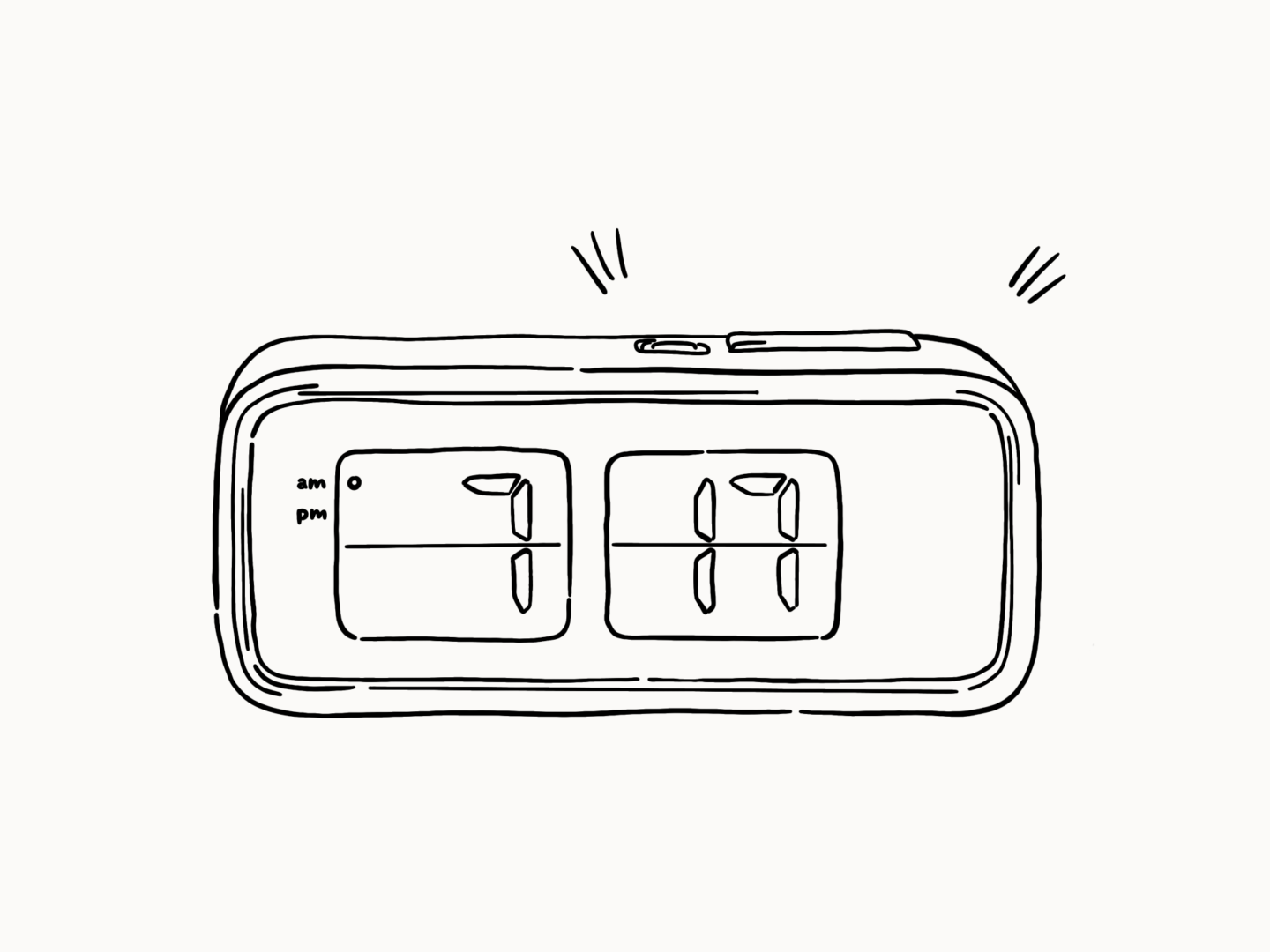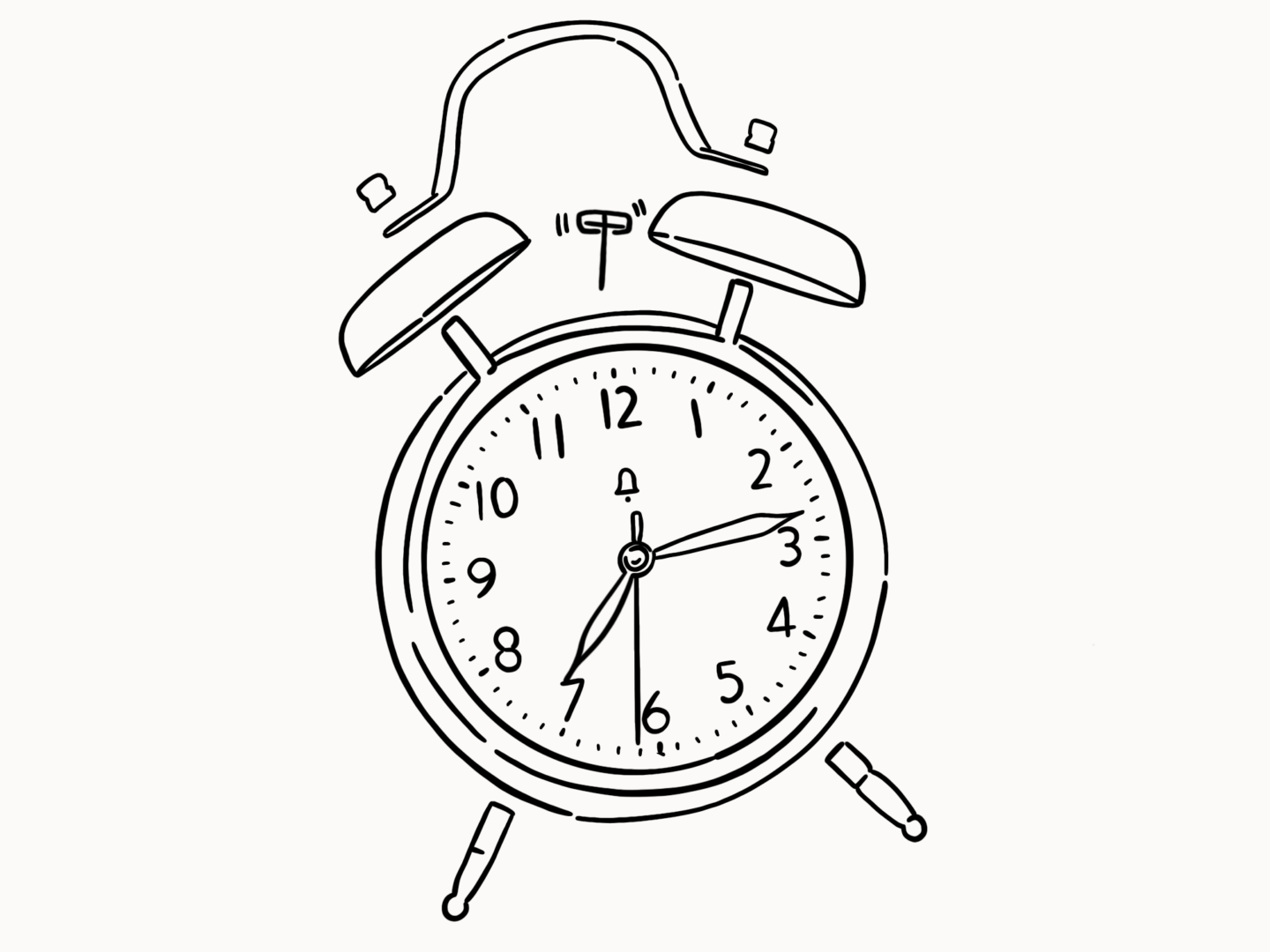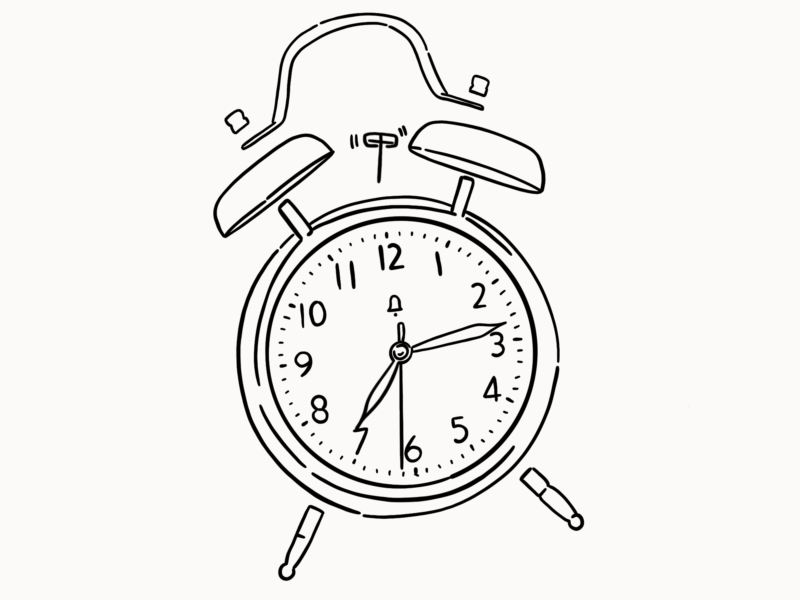My alarm clock is my biggest nemesis. I am not a morning person. Every awakening is a rude awakening, but the shrill ringing of my alarm is the rudest. It’s mean and it’s loud and it’s my least favourite sound. But I thought I could use the power of the design story to face my enemy and hopefully learn to appreciate it a little more.
There was a time before the alarm clocks we know and hate. In that magical land that time forgot (not the one with adorable dinosaurs), most people didn’t just sleep all day. So how did they do it?
You could argue that our ancestors were just better in tune with their own bodies and the rhythms of nature. With limited artificial light and being subjected more keenly to the change in temperatures through the day, they went to sleep when the day got dark and rose again when the light did. In nature, animals rely on their circadian rhythms and they get by just fine.
But never to settle with what our mama (nature) gave us, from very early on people have tried to find ways to mark time and set alarms.

One of my favourite pseudo alarm clocks comes from China in the form of candle clocks. These had the benefit of working night or day, unlike sundials. Candles were marked with even gradations. When the candle burned down, each marking would then represent a unit of time. At their chosen marking they would insert nails into the candle. Then when the candle had melted enough the nails would fall from the candle, no longer held in by wax, and create a sound as they fell into the metal tray below.
In 1319, the first chiming of the first church bells was recorded. These acted, essentially, as giant communal alarm clocks, with regular chiming on the hour every hour. Depending on where you were you even got some ringtones as fancy as anything your iPhone will produce thanks to the artists stylings of skilled campanologists.
Leaving behind China’s ingenuity and the artistry of campanology we turn to Britain in the 1800s, where the upper classes quickly came to the realisation – why invent something when you can just pay someone to do to a job for you? Thus, the occupation of knocker-upper was created. Using everything from pea-shooters, to truncheons, to just a good old-fashioned rap on the door, knocker uppers when around the houses of their clients knocking to wake them up. So they were exactly what their name suggests. As the working classes in cities expanded so did the work of knocker uppers. In fact, they were still knocking as late as 1970.
Perhaps that’s because the first mass-produced personal alarm clock didn’t enter the market until the 1870s. If you ask someone on the street to draw you an alarm clock they’re likely to draw you a round face with a bell either side and two little feet. I actually still rely on pretty much exactly this kind of clock – the one you can see below! This clock was originally manufactured in a hand wound form by the Seth E. Thomas Clock Company. But it rose to fame after Thomas’s death in 1859 some time closer to 1900 in the hands of the Wesclox Company. The Westclox alarm had “a mainspring for the time-mechanism, and a bell-spring, for the alarm. They also featured a dial at the top for the user to set the alarm to ring at whatever time they chose. These clocks ran on 36-hour springs, and had to be wound each morning (or evening). The bell-springs generally had to be wound up every two or three days, depending on how deep the sleeper happened to be!”

We wouldn’t have the annoying beep-beep beep-beep of the digital alarm clock without the invention of the electrical doorbell in 1831. Joseph Henry’s decision to use a tightly coiled electromagnet to make a high-pitched noise, would change the sound of mornings as well as unexpected guests forever. Well, at least it would in just over 6- years later when Austrian Josef Pallweber got his hands on the buzzer and made it a part of his clocks.
But it seems that many of us have replaced the single use alarm clock with, you guessed it, our smartphones. In a survey by O2, in 2012, 54% of their customers had replaced an alarm clock with their phone. Despite a number of studies telling us not to, telling us not to have our phones be the first thing we see, I would bet that number has increased in the 7 years since that study.
But, whatever form your alarm takes, the elephant in the room of alarm clock we’ve not discussed is why we need them. I hear you saying so that we wake up on time. I hear it, and I raise it another why. Back in the days of relying on church bells and calling cockerels people got up early to make the most of the day light and in many places because morning prayers were seen as particularly spiritual. Then our good friend the industrial revolution came along closely followed by its BFF the 9-5. So instead of following our own circadian rhythms we had a set time we needed to be awake. It was precise. It was mechanical. It was just like our alarm clocks.
I’m not sure I’ll ever love my alarm clock, but I am glad I don’t have to rely on a burning and candles to help me get to work on time. That said I don’t think I’d be hitting snooze quite as often if I had to pay a stranger to knock on my door every morning. I’m just going to stick with my trusty Newgate for now though.


